
How to Choose the Best Hard Shell Roof Top Tent for Your Adventures | Ultimate Guide
Table of Contents
- Why Choose a Hard Shell Roof Top Tent? Unpacking the Advantages
- Understanding Hard Shell Roof Top Tent Mechanisms: Pop-Up, Wedge, and Hinged Explained
- Key Features to Consider When Choosing Your Hard Shell Roof Top Tent
- Exploring Different Types of Hard Shell Roof Top Tents: Categories Based on Needs and Usage
- Comprehensive Buying Guide & Checklist: Making an Informed Purchase
- Installation, Usage, and Maintenance Guide: Getting the Most Out of Your RTT
- Pros and Cons of Hard Shell Roof Top Tents: Is it the Right Choice for You?
- Frequently Asked Questions (FAQ) About Hard Shell Roof Top Tents
- Conclusion: Your Journey to the Perfect Hard Shell RTT Starts Here
Key Takeaways
- Definition: Vehicle-mounted shelters with a rigid outer shell.
- Main Benefits: Fast setup/takedown, strong weather protection, durability, frees up vehicle space.
- Common Types: Pop-Up (fastest setup), Wedge (aerodynamic), Hinged/Clamshell (spacious).
- Key Considerations: Material (shell/fabric), size/capacity, weight vs. vehicle load rating, weather resistance, setup ease, budget.
- Target Users: Overlanders, frequent campers, travelers needing robust gear.
- Installation: Requires mounting to vehicle roof rack; professional help recommended if unsure.
- Maintenance: Regular cleaning, drying, inspection needed for longevity.
Top Hard Shell Roof Top Tents: Reviews, Comparisons, and Expert Buying Advice
You pull over. The engine ticks quiet. Up goes the tent—a box on the roof becomes a room. Done in minutes. No messing with poles on wet ground, no stakes finding only rocks. This is the deal with hard shell roof top tents. They sit up there, bolted to the car, waiting. A hard outer case protects everything inside. Pop the latches, give it a push, and you’ve got a place to sleep. Simple.
These aren’t your grandpa’s canvas pup tents. The hard shell shrugs off rain, ignores wind mostly. Snow? It sits on top until you push it off. Durability is the name of the game. Keeps the weather out. Keeps you dry. Ground tents soak through. Soft shell RTTs flap in the breeze. These things—they just sit there, solid. Space inside the car stays clear too. Bedding folds up inside the tent. Gear goes in the trunk, not piled on the passenger seat.
Who buys these? People who move. Overlanders driving dusty tracks. Campers hitting spots every weekend. Folks who value time over fiddling with gear. They want sturdy stuff. Reliable stuff. This guide lays it out—the types, the features, what matters. No fluff. Just the facts you need to figure out if one of these roof boxes is right for your rig. If you already have made your mind then here is the selection of Top rated Hard Shell RTT and Top Pop-up Hard Shell RRTs.
Why Choose a Hard Shell Roof Top Tent? Unpacking the Advantages
Key Advantages of Hard Shell Roof Top Tents
Time. You save time. Pull up, pop latches, push. Maybe unfold a ladder. You're done. Seconds, maybe a minute or two. Packing up is almost as fast—fold it down, latch it, drive away. Compare that to finding a flat spot, clearing rocks, laying out a ground sheet, threading poles, hammering stakes, fighting the rain fly. Forget it. The hard shell is fast. People who camp a lot, move every day—overlanders—they get it. Less setup means more time driving, hiking, drinking a beer by the fire. Whatever. It’s just easier.
Then there's the shell itself. Fiberglass, aluminum, tough plastic—it takes a beating. Branches scrape against it on tight trails. Rain hammers down. Wind howls. The hard shell doesn't care much. It’s built tougher than fabric alone. This means it lasts longer. You buy it once, maybe it lasts the life of the car, maybe longer. It’s an investment, sure—but cheaper than replacing ripped canvas every few years. And being off the ground means you're away from puddles, mud, crawling things. Dry is good.
Space opens up inside your truck or SUV. All the sleeping stuff—mattress, pillows, sleeping bags—often stays inside the closed tent. That leaves room inside the vehicle for people, dogs, coolers, duffel bags. Everything has its place. It keeps the truck organized, less cluttered. Less shuffling gear around every time you stop or start. The mattress is usually built-in too. No wrestling with inflatable pads that leak halfway through the night.
Sleeping high off the ground feels different. Safer, maybe. You can see around better. Critters are less likely to stumble into your sleeping space. The hard shell adds another layer—it feels more secure than thin tent fabric. It’s not a bank vault, but it's something. People see these things as just camping gear. Maybe they are. But they're also tools. Tools that save time, provide shelter, maybe even save money long run. Fewer motel rooms needed when you can sleep anywhere you park. More freedom on the road. That’s the real payoff—flexibility. Park it, pop it, sleep. Move on.
Understanding Hard Shell Roof Top Tent Mechanisms: Pop-Up, Wedge, and Hinged Explained
Not all hard shell RTTs pop open the same way. Different designs work better for different needs. You need to know the basics before you slap one on your roof. Three main styles dominate the market: pop-up, wedge, and hinged—or clamshell, some call it. Each has its quirks, its good points, its bad points.
Pop-Up types shoot straight up. Think of a box lid lifting vertically. Gas struts usually do the heavy lifting. You unlatch it, give it a nudge, and whoosh—it’s up. Walls are usually near-vertical all around.
- Pros: Fastest setup, dead simple operation, often compact and aerodynamic when closed.
- Cons: Can catch wind like a sail when open, headroom might be best only in the middle.
- Best For: People who want maximum speed, solo travelers, couples, smaller vehicles, anyone worried about adding too much height.
Wedge style tents pivot open at one end. Hinges at the front or back let the shell lift, forming a triangle shape. The high end gives you headroom.
- Pros: Very aerodynamic when closed—low profile saves fuel, often lighter than other types, good balance of space and sleekness.
- Cons: Setup might take a few seconds longer than a pop-up, headroom tapers down significantly at one end.
- Best For: Fuel-conscious drivers, overlanders worried about drag, smaller vehicles, people who like the low-profile look. BA Tents often uses this design effectively.
Hinged or Clamshell tents open wide, like a book or, well, a clamshell. Hinges run along one side, lifting the top shell over. This often creates the largest, most rectangular sleeping space.
- Pros: Generally the most interior room, good consistent headroom, feels spacious, often built very tough.
- Cons: Can be the bulkiest and least aerodynamic when closed, often heavier, setup might be a bit more involved.
- Best For: Families needing space, couples who want room to move, campers staying put longer, people needing maximum comfort, those using larger vehicles like trucks. Check out options from Overland Vehicle Systems.
Types of Hard Shell Roof Top Tents Comparison
| Type | Setup Speed | Aerodynamics | Space | Best For | Notable Features |
|---|---|---|---|---|---|
| Pop-Up | ★★★★★ (Fastest) | ★★★☆☆ | ★★★☆☆ | Solo travelers, couples, smaller vehicles | • Vertical lift mechanism • Gas struts assist opening • Near-vertical walls • Compact design |
| Wedge | ★★★★☆ | ★★★★★ (Most aerodynamic) | ★★☆☆☆ | Fuel-conscious drivers, overlanders worried about drag | • Hinges at front/back • Triangle shape when open • Low profile when closed • Often lighter weight |
| Hinged/Clamshell | ★★★☆☆ | ★★☆☆☆ | ★★★★★ (Most spacious) | Families, couples wanting more room, longer stays | • Opens like a book • Rectangular sleeping space • Good consistent headroom • Often very durable |
Key Features to Consider When Choosing Your Hard Shell Roof Top Tent
Alright, you know the types. Now, the guts. What makes one box better than another? Materials, size, weight—these things matter. Pay attention here.
Material Quality and Durability: This is the big one.
-
Shell Material:
- ABS Plastic: Often lighter, can be cheaper. Might get brittle in extreme cold or fade under harsh sun over many years.
- Fiberglass: Strong, good insulation, easily repaired if cracked. Can be heavier than ABS or aluminum.
- Aluminum: Very strong, lightweight for its strength, resists corrosion. Often found on premium, rugged tents like some from 23Zero. Can be more expensive and might show dents.
-
Tent Fabric: The canvas or synthetic walls matter too.
- Canvas (Poly-Cotton): Breathes well (less condensation), good insulation, very durable. Heavier, needs to dry thoroughly, might require occasional waterproofing treatment.
- Ripstop Nylon/Polyester: Lighter, dries quickly, excellent water resistance, often UV coated. Can be less breathable, might feel colder or hotter inside depending on conditions.
- Frame and Hardware: Look at the hinges, the gas struts, the ladder, the zippers. Are they flimsy? Made of cheap plastic? Or solid aluminum or stainless steel? Good hardware lasts. Cheap hardware breaks—usually when you're miles from nowhere.
Size and Sleeping Capacity: How many people are sleeping up there? Be honest.
- Dimensions: Check the length and width when open. Will it fit you, your partner, maybe a dog? Check the closed dimensions too—will it overhang your windshield too much? Fit in your garage?
- Sleeping Area: Look at the actual mattress size. "Two-person" can mean different things.
- Internal Height: Can you sit up comfortably? Enough headroom makes a difference, especially on rainy days when you're stuck inside.
Weight and Vehicle Load Capacity: This is critical. Don't skip this.
-
Roof Load Rating: Your car's roof has a weight limit. Two limits, actually.
- Dynamic Load Capacity: The weight it can handle while driving. This is usually lower. The RTT weight plus your roof rack must be below this limit.
- Static Load Capacity: The weight it can handle when parked. This needs to support the tent, rack, and the people inside. Usually much higher than dynamic.
- Expert Tip: Always Check Vehicle Load Capacity. Find it in your owner's manual or ask the manufacturer. Overloading is dangerous—bad handling, potential roof damage.
- RTT Weight: Heavier tents impact fuel economy and how your car handles corners and bumps. Lighter tents are better for smaller cars and fuel bills. Consider small hard shell roof top tent options if weight is a major concern.
Weather Resistance and Ventilation: You want to stay dry and breathe easy.
- Waterproofness: Look for hydrostatic head ratings (HH) on the fabric. Higher numbers mean better water resistance. Check seams—are they taped or sealed?
- Wind Resistance: Hard shells handle wind better than soft shells generally. Look for aerodynamic shapes (wedge) or sturdy construction (clamshells from brands like Tuff Stuff).
- Ventilation: Windows and vents are crucial. Without airflow, condensation builds up inside, making everything damp. Expert Tip: Consider Ventilation in Humid Climates. Mesh screens keep bugs out while letting air flow.
Setup and Takedown Time and Ease of Use: How easy is it, really?
- Mechanism: Gas struts make opening easy. Manual systems might require more effort. How many latches?
- Ladder: Is it sturdy? Easy to deploy and adjust? Comfortable rungs for bare feet?
- Expert Tip: Practice Setup and Takedown at Home. Don't wait until you're tired and it's dark in the woods. Figure it out in your driveway.

Price and Budget Considerations: They ain't cheap.
- Price Range: Hard shells run from maybe $1,500 up to $5,000 or more. You generally get what you pay for—better materials, features, construction. The Trustmade Pioneer Fold-out might represent a mid-range value.
- Value: Think long term. A durable tent used often can be a good value despite the high initial cost.
Additional Features and Accessories: The extras.
- Integrated Lighting: LED strips inside are handy.
- Storage Pockets: Places to stash phones, keys, books.
- Awnings/Annexes: Some tents support add-on rooms for more living space, like options from Overland Vehicle Systems.
- Mattress Quality: Most include one, but thickness and comfort vary. Expert Tip: Invest in a Quality Mattress Topper. A good night's sleep is worth a few extra bucks.
Think about how and where you'll use it. Match the features to your needs. Don't buy more tent than you need, but don't cheap out on the important stuff like materials and load capacity.
Exploring Different Types of Hard Shell Roof Top Tents: Categories Based on Needs and Usage
People camp differently. Needs vary. So, tents vary. Let's slice the market up based on who's buying and why. Finding the rest hard shell RTT means matching the tool to the job.
Category 1: Best Lightweight Hard Shell RTTs for Small SUVs and Fuel Efficiency
- Who needs this? Someone with a Subaru, a smaller crossover, maybe even a sturdy car. Weight matters here. Fuel costs matter. They aren't crossing continents off-road, just hitting state parks or forest roads for the weekend. Solo travelers fit here too.
- What to look for: Aluminum shells help keep weight down. Wedge designs like some BA Tents models are often lighter and very aerodynamic. Pop-ups can also be light. Thinner, high-tech fabrics save pounds. Compact closed dimensions are key for smaller roofs. Less weight means less strain on the vehicle and better gas mileage—or battery range.
- Think: Weekend warrior, occasional camper, road-tripper prioritizing efficiency over maximum space or bombproof build.
Category 2: Most Durable and Rugged Hard Shell RTTs for Extreme Overland Adventures
- Who needs this? The serious traveler. The expedition type. Someone driving rough tracks for weeks or months. They expect bad weather, rough conditions, maybe even impacts from low branches. Reliability is paramount. Failure isn't an option deep in the backcountry.
- What to look for: Heavy-duty construction. Thick aluminum plate or robust fiberglass shells. Reinforced frames. Beefy hinges and struts. High waterproof ratings (high HH numbers) and tough, tear-resistant canvas or heavy-duty polyester fabrics. Look at brands known for overlanding gear, like 23Zero or Tuff Stuff. Weight is secondary to durability here. Expect these to be heavier and more expensive.
- Think: Long-distance off-roader, remote area explorer, someone living out of their vehicle for extended periods.
Category 3: Best Family-Friendly Hard Shell RTTs for Spacious and Comfortable Camping
- Who needs this? Mom, dad, a kid or two. Maybe a couple who just likes elbow room. Comfort is key. They might set up camp for a few days at a time, not just overnight. Space for gear inside, room to sit up and change—it matters.
- What to look for: Hinged/Clamshell designs often offer the most floor space and consistent headroom. Look for wider models—queen or king-size sleeping areas. Check internal height specs. Wider ladders might be easier for kids. Options for adding an annex room below provide valuable living or changing space, offered by brands like Overland Vehicle Systems. Thick, comfortable mattresses are a plus.
- Think: Family vacations, base camping, users who prioritize comfort and space over ultimate lightweight or extreme ruggedness.
Category 4: Best Value Hard Shell RTTs: Affordable Options Without Compromising Essential Quality
- Who needs this? Someone new to RTTs, not ready to drop $4k. The budget-minded camper who still wants the hard shell benefits. Occasional users who don't need expedition-grade gear.
- What to look for: Focus on the basics done well. A solid shell (maybe ABS or standard aluminum), decent fabric waterproofing, reliable opening mechanism, sturdy ladder. Might forgo premium features like integrated lighting, thickest mattresses, or fancy finishes. Simpler designs often cost less. Look for reputable brands offering entry-level hard shells, perhaps like the Trustmade Scout. Read reviews carefully to ensure core quality isn't sacrificed too much.
- Think: Entry-level RTT user, budget-conscious adventurer, weekend camper needing reliable basics.
The Evolution of Hard Shell RTT Technology
These things didn't just appear. Roof tents started simple, often soft-sided affairs. Hard shells came later, offering better protection and speed. Early ones were heavy fiberglass boxes. Then came lighter materials—ABS plastics, aluminum. Mechanisms got smarter—gas struts replaced manual lifting. Aerodynamics improved with wedge shapes. Features piled on—LEDs, USB ports, solar panel mounts like on some Bundutec models. Fabrics got more waterproof yet breathable. It's a constant refinement—making them lighter, faster, stronger, more comfortable. What's next? Who knows. Lighter composites? Better insulation? More integration with vehicle systems? The evolution continues.
Hard Shell RTT Categories Based on User Need
| Category | Ideal For | Key Features | Example Brands |
|---|---|---|---|
| Lightweight | Small SUVs, crossovers, fuel efficiency focus | • Aluminum construction • Wedge designs • Weight under 130 lbs • Aerodynamic profile |
BA Tents |
| Rugged/Durable | Extreme overlanding, expedition use | • Heavy-duty materials • Reinforced frames • High waterproof ratings • Extra weather protection |
23Zero, Tuff Stuff |
| Family-Friendly | Families, comfort-focused campers | • Larger sleeping area • More headroom • Wider ladders • Annex compatibility |
Overland Vehicle Systems |
| Budget-Friendly | Entry-level users, occasional campers | • Simpler designs • Focus on essential features • Quality basics over premium extras |
Trustmade |
Comprehensive Buying Guide & Checklist: Making an Informed Purchase
Buying one of these isn't like picking up a sleeping bag. It's a big purchase. It bolts to your car. You sleep in it—hopefully high and dry. Don't rush it. Think it through. Here’s a path:
Step-by-Step Guide to Buying a Hard Shell RTT:
- Define Your Needs: Be honest. How often will you really use it? Where will you go—highways or hardcore trails? Who's sleeping in it? What's your vehicle? How much can you spend without eating ramen for six months? What features are must-haves versus nice-to-haves? Write it down.
- Research Types and Brands: Now you know the mechanisms—pop-up, wedge, hinged. Read up on them again. Look at different brands. Trustmade, 23Zero, Overland Vehicle Systems, Tuff Stuff, BA Tents, Bundutec. They all have different strengths, price points, reputations. See what fits your list from step 1.
- Check Vehicle Compatibility: CRUCIAL STEP. Find your vehicle's dynamic and static roof load ratings. In the manual, online, call the dealer—find it. Your chosen RTT plus roof rack must be under the dynamic limit. The RTT, rack, and occupants must be supported by the static limit. Also check mounting compatibility—does your roof rack work with the tent's mounting system? Some require specific crossbar types or spacing. Don't guess.
- Compare Key Features: Look closely at specs. Shell material (aluminum, fiberglass, ABS). Fabric type and waterproof rating (HH). Dimensions (open and closed). Weight. Mattress thickness. Included features (ladder, lights, pockets). Setup mechanism and claimed time. Warranty period. Make a spreadsheet if you have to.
- Read User Reviews & Seek Feedback: Manufacturer descriptions are one thing. Real-world experience is another. Search forums (like Expedition Portal, Overland Bound), Reddit groups, product review sites. How does it hold up after a year? Does it leak? Is setup really that fast? What breaks? What do people love or hate? This is gold.
- Consider Reputable Dealers: Buying from a place with good customer service matters. What if it arrives damaged? What if you need warranty support? Check dealer reviews too. Places specializing in hard shell roof top tents often offer better support and knowledge.
- Inspect Before Final Purchase (If Possible): If buying locally or at a show, look it over. Open and close it. Check seams, zippers, hardware. Look for cracks or damage.
- Practice Setup After Purchase: As mentioned before—do it at home first. Make sure you understand it. Ensure nothing's broken or missing before your first trip.
Checklist Before You Buy:
Hard Shell Roof Top Tent Buying Checklist
Tick the boxes. Be sure. Then take the decision.
Installation, Usage, and Maintenance Guide: Getting the Most Out of Your RTT
Got the box. Now what? Bolting a heavy tent to your roof needs care. Using it right makes trips better. Keeping it clean makes it last. Simple stuff, mostly.
Installation Guide (General Steps - Always Follow Manufacturer Instructions First!)
- Mounting Systems: Most tents use universal mounting brackets that clamp onto your roof rack crossbars. Some might need specific adapters or rail systems. Know what your tent needs and what your rack provides.
-
Basic Steps:
- Prep: Install your roof rack securely first, following its instructions. Ensure crossbars are spaced correctly for the tent.
- Lift: This is usually a two-person job, maybe more for heavy tents. Lift the RTT carefully onto the crossbars. Center it side-to-side. Position it front-to-back (avoid excessive overhang).
- Secure: Slide mounting bolts into the tent's tracks. Position brackets under the crossbars. Tighten nuts evenly and securely. Use lock nuts or thread locker if recommended.
- Double Check: Shake the tent gently. Are all bolts tight? Is it sitting evenly? Re-check tightness after the first drive.
- Professional Help: If you're not comfortable wrenching on your roof, lifting heavy objects, or figuring out load limits—pay someone. A good 4x4 shop or rack installer can do it right. Safety matters.
Tips for Comfortable Usage:
- Level Vehicle: Sleeping on a slope sucks. Use leveling blocks under tires if the ground isn't flat. Makes a huge difference.
- Bedding: The included mattress might be fine, or it might feel like a board. Expert Tip: Invest in a Quality Mattress Topper. Memory foam or self-inflating toppers add serious comfort. Use comfy pillows and sleeping bags suited to the temperature.
- Organization: Use internal pockets. Maybe add a gear loft net. Keep essentials handy. Use external bags for shoes to keep dirt out.
- Ventilation: Expert Tip: Consider Ventilation in Humid Climates. Crack windows or vents even if it's cold or raining slightly. Airflow prevents condensation buildup inside. Keep mesh screens zipped against bugs.
- Ladder Safety: Place the ladder on firm ground at the correct angle (check instructions). Climb carefully, facing the ladder. Don't overload it.
Maintenance and Longevity Guide: Treat it right, it lasts longer.
- Clean After Trips: Brush off dirt, leaves, bird crap. Wipe down the shell. Clean the mattress cover if needed.
- Dry Thoroughly: Crucial. Never store it wet or damp. Open it up at home to air dry completely after rain or heavy dew. Mold and mildew will ruin fabric.
- Inspect Regularly: Expert Tip: Regularly Inspect and Maintain Your RTT. Check fabric for tears, seams for separation, zippers for damage. Look at hinges, struts, mounting hardware. Catch small problems before they become big ones.
- Lubricate: A little silicone spray on zippers and hinge points keeps things moving smoothly.
- UV Protection: Fabric fades and degrades in sunlight. Use a UV protectant spray occasionally on canvas or polyester if parking long-term in intense sun.
- Storage: If taking it off the vehicle for the season, store it in a dry garage or shed, preferably covered, off the ground.
It’s not complicated. Keep it clean, keep it dry, check the bolts. It’ll serve you well.
Pros and Cons of Hard Shell Roof Top Tents: Is it the Right Choice for You?
Everything has its upsides and downsides. These roof boxes are no different. Let's lay it bare. Helps you decide if the trade-offs work for your kind of travel, your kind of budget.
Pros (The Good Stuff):
- Speed & Convenience: Setup/takedown is ridiculously fast. Minutes, not half-hours. Huge win for frequent movers.
- Durability & Weather Protection: Hard shell laughs at rain, wind, sometimes even hail. Materials are generally tough. Lasts longer than flimsy ground tents.
- Space Efficiency: Keeps bedding on the roof, freeing up valuable interior vehicle space for other gear or people.
- Comfortable Sleeping: Flat platform, usually includes a decent mattress. Off the cold, wet, bumpy ground. Feels secure up high.
- Longevity & Investment: Built tougher, lasts longer if cared for. Holds resale value better than soft tents. Can save money on accommodation over years of travel.
Cons (The Not-So-Good Stuff):
- High Initial Cost: No getting around it—they cost a lot upfront. Thousands of dollars. A major purchase.
- Weight & Aerodynamics Impact: Adding 100-200+ lbs to your roof affects handling, center of gravity, and fuel economy. Some shapes catch wind more than others.
- Installation & Vehicle Compatibility: Getting it onto the roof can be tricky. You MUST ensure your vehicle and rack can handle the weight safely. Not all cars are suitable.
- Limited Space (Compared to large ground tents): While good for 1-3 people usually, they don't offer the sprawling space of a big cabin tent for standing up, changing, or storing lots of gear inside.
- Height Increase: Makes your vehicle taller. Might prevent access to parking garages, drive-thrus, or low-clearance trails. Need to be aware of overhead obstacles.
So—is it right for you? Depends. If you camp often, move frequently, value speed and convenience, travel overland, and have the budget and a suitable vehicle—probably yes. The benefits often outweigh the costs. If you camp once a year, have a small car with a low roof limit, need tons of space, or are on a tight budget—maybe a good ground tent is still the better play. Weigh the pros against the cons based on your reality.
Frequently Asked Questions (FAQ) About Hard Shell Roof Top Tents
Questions pop up. Natural when you're looking at strapping a bedroom to your car roof. Here are some common ones.
Q: Are hard shell roof top tents difficult to install?
A: It varies. Some lighter models on compatible racks might take an hour or two with a helper. Heavier tents or complex rack systems can be more involved. Reading instructions carefully is key. Lifting requires strength. If you're unsure about torque specs, compatibility, or just uncomfortable—get professional help. Better safe than sorry.
Q: Will a hard shell RTT significantly affect my fuel economy?
A: Yes, expect some impact. How much depends on the tent's weight, its shape (aerodynamic wedge vs. boxy pop-up), your vehicle, and how you drive. Maybe 1-3 MPG loss, perhaps more with very heavy/bulky tents or at high speeds. It's a trade-off for the convenience.
Q: How durable are hard shell roof top tents in strong winds and heavy rain?
A: Generally, very durable. The rigid shell handles wind loads well, much better than flapping canvas. Quality fabrics and sealed seams keep heavy rain out. Proper setup (leveling, securing latches) helps. They are designed for bad weather.
Q: Is there enough space inside a hard shell RTT for two people and gear?
A: Usually, yes, for two average adults. Most are designed for couples. Wider models offer more shoulder room. Internal space for gear is limited—use pockets, maybe a small bag. Don't expect room for large suitcases inside. Check internal dimensions before buying. For families, larger hinged/clamshell models are better.
Q: What is the lifespan of a hard shell roof top tent?
A: A long time, if you take care of it. With proper maintenance (cleaning, drying, inspecting), a quality hard shell tent can easily last 5-10 years or much longer. UV exposure, harsh conditions, and neglect shorten lifespan. Build quality matters too—premium materials last longer.
Q: Can I store bedding inside the RTT when it's closed?
A: Yes, most hard shells allow this. Sleeping bags, pillows, maybe a thin topper can often stay inside when you fold it down. This is a major space saver inside your vehicle. Check manufacturer specs, as thicker bedding might prevent proper closing.
Q: Are hard shell RTTs worth the investment compared to ground tents?
A: Depends on usage. For the frequent camper, overlander, or road-tripper, the convenience, speed, comfort, and durability often justify the high cost over time. You get more usable travel time, potentially save on motels. For the occasional weekend camper staying in one spot, a good ground tent might be perfectly adequate and much cheaper. It's about matching the tool to your needs and budget.
Conclusion:
So, there it is. The rundown on hard shell roof top tents. They pop up fast. They take a beating from the weather. They keep you off the ground and often let you keep your bed made inside. Convenient things, no doubt. But they cost money, add weight, and need the right vehicle.
We talked types—pop-up, wedge, hinged. Features—materials, weight, size. Who needs what—the lightweight seeker, the hardcore trekker, the family camper, the budget buyer. Installation, use, care—the practical stuff. The good, the bad.
Ultimately, it boils down to you. How you travel. Where you go. What you value. Is the speed worth the price? Is the durability needed for your trips? Can your car handle the load? Use the checklist. Read the reviews. Think about your adventures. Maybe a box on the roof makes sense. Maybe it doesn't.
Ready to look closer? Browse the options. See the different styles from brands like Trustmade or 23Zero. Got questions? Experiences? Spill them below. Someone else might learn something. Find forums, talk to owners. The right tent is out there. Go find it.


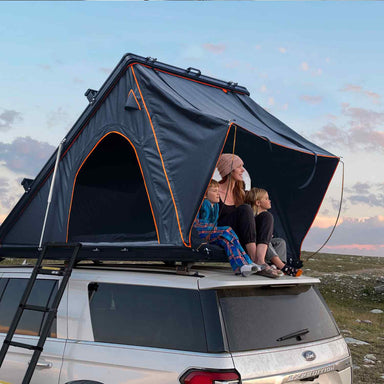
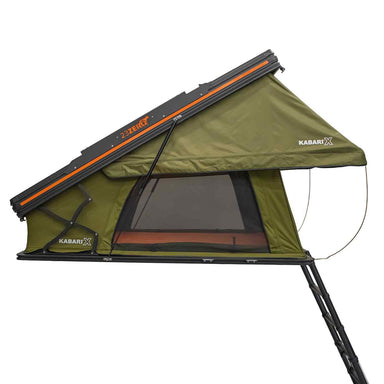
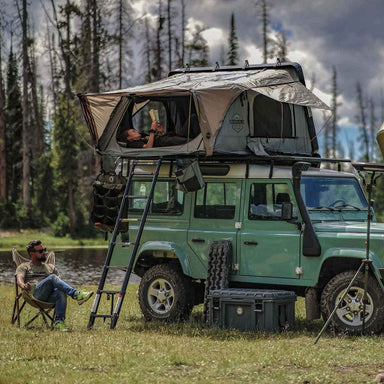
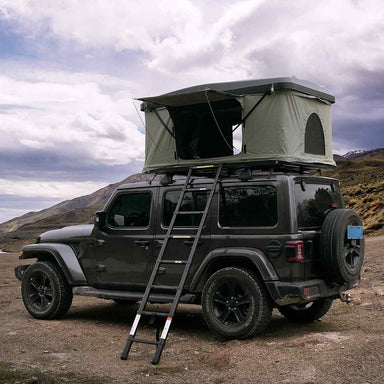

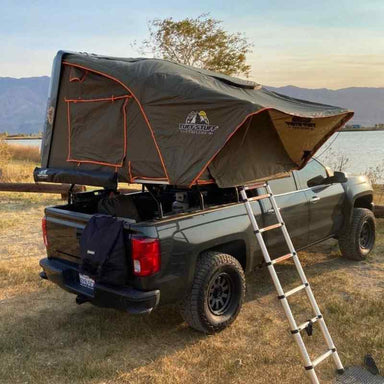
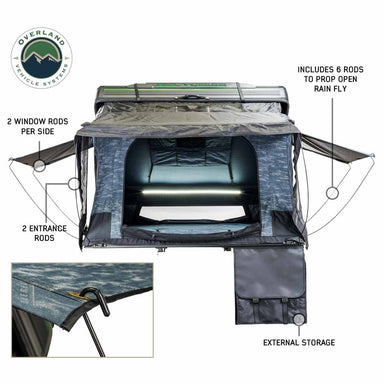
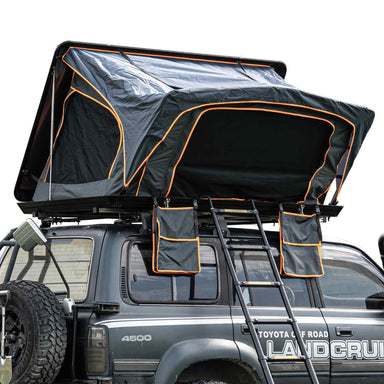
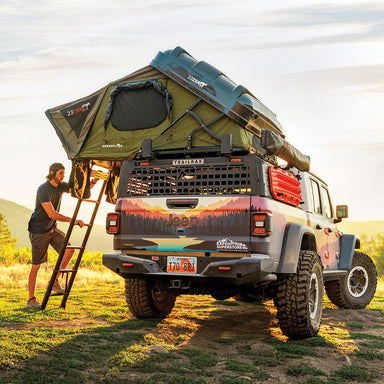
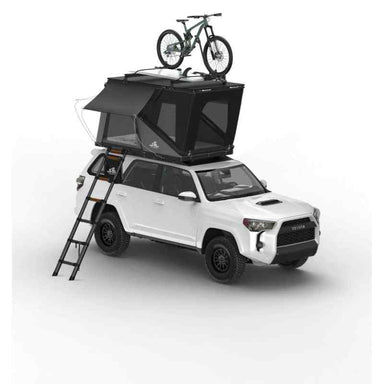
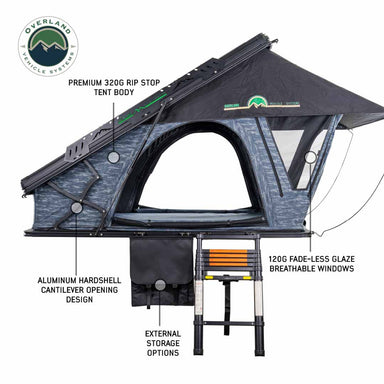
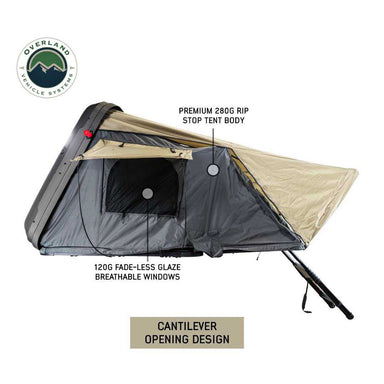
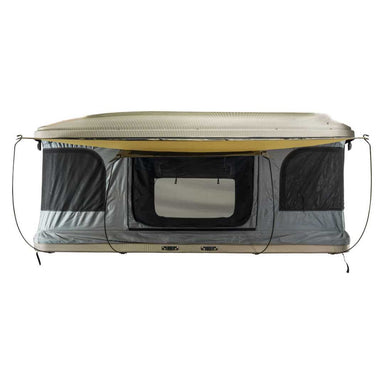
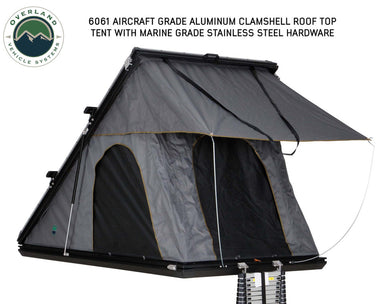
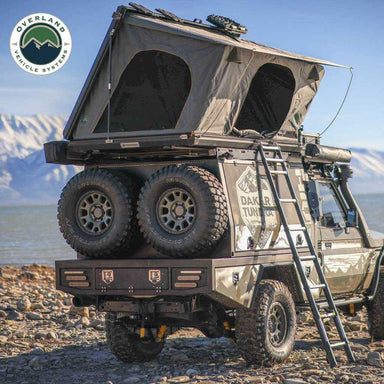
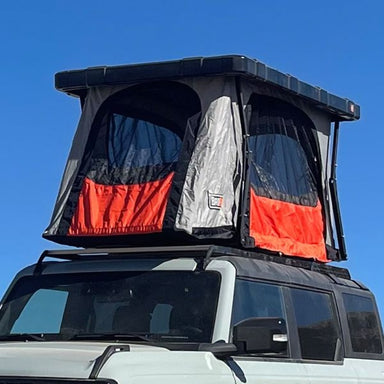
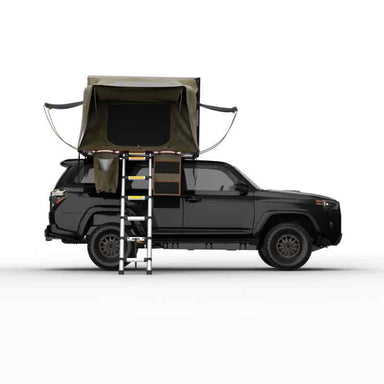
Leave a comment